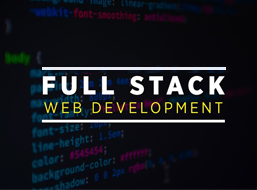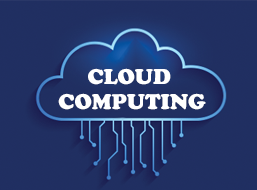Table of contents
|
1. Understanding Cloud Computing |
|
2. Types of Cloud Computing |
|
3. Cloud Computing Deployment Models |
|
4. Why Cloud Computing Matters in 2025 |
|
5. Cloud Computing and AWS |
|
6. Cloud Computing Technology Stack |
|
7. Career Pathway: From Beginner to Architect |
|
8. Learning Path: Skills and Certifications |
|
9. Cloud Projects to Build Your Portfolio |
|
10. FAQs: Cloud Career Path in 2025 |
|
11. Conclusion |
Cloud computing is no longer a futuristic concept; it’s the backbone of how businesses, apps, and services operate today. From streaming your favorite show to running enterprise-level analytics, the cloud powers it all.
At Apponix, we have seen firsthand how cloud skills can transform careers. Whether you are a complete beginner or already in tech, 2025 offers more opportunities than ever to step into this growing field. And if you’ve ever wondered where to start, which paths to take, and how to grow from the basics to becoming a cloud architect, you’re in the right place.
In this guide, we will break down the cloud computing definition, types, benefits, technologies, certifications, and the exact roadmap you can follow to go from zero to expert, plus tips to stand out in the job market.
1. Understanding Cloud Computing
Before mapping your career, let’s get clear on what cloud computing means.
Definition:
Cloud computing is the delivery of computing services, including storage, servers, databases, networking, software, and analytics, over the internet, commonly referred to as “the cloud.”
Instead of owning and maintaining physical hardware, you rent what you need from a cloud provider, paying only for what you use.
Example:
Think of it like using electricity; you don’t build a power plant; you connect to a grid. In cloud computing, this grid is provided by companies such as AWS, Microsoft Azure, or Google Cloud.
2. Types of Cloud Computing
There are three main cloud computing types, each serving different needs:
|
Type |
What It Means |
Example Use Case |
|
IaaS (Infrastructure as a Service) |
Rent IT infrastructure—servers, networking, storage |
Hosting websites, backup solutions. |
|
PaaS (Platform as a Service) |
A platform for developers to build, test, and deploy apps. |
Developing a web app without managing hardware. |
|
SaaS (Software as a Service) |
Access ready-to-use software via the internet. |
Google Workspace, Zoom, Salesforce. |
3. Cloud Computing Deployment Models
Choosing the right cloud computing deployment model depends on your needs:
|
Model |
Description |
Best For |
|
Public Cloud |
Services offered over the public internet. |
Startups, general-purpose workloads. |
|
Private Cloud |
Dedicated resources for one organization. |
Banking, healthcare, government. |
|
Hybrid Cloud |
Combines public and private clouds. |
Businesses with varying security needs. |
|
Multi-Cloud |
Using multiple providers for flexibility. |
Large enterprises are avoiding vendor lock-in. |
4. Why Cloud Computing Matters in 2025
The benefits of cloud computing go far beyond cost savings:
-
Scalability: Easily adjust resources as demand changes.
-
Global Access: Work from anywhere with an internet connection.
-
Security: Providers offer advanced protection and compliance.
-
Innovation Speed: Deploy apps faster without heavy infrastructure setup.
By 2025, cloud adoption is expected to reach new heights, with more industries migrating completely to cloud-based systems.
5. Cloud Computing and AWS
When people talk about cloud careers, Cloud computing, and AWS often come up first. Amazon Web Services is the market leader, offering over 200 services for computing, storage, AI, and more.
Why AWS?
-
Widest range of services and tools.
-
Global data center coverage.
-
Strong job market demand for AWS-certified professionals.
If you want to specialise, starting with AWS is a smart move.
6. Cloud Computing Technology Stack
The cloud computing technology landscape includes:
-
Virtualization: Running multiple systems on one physical server.
-
Containers: Packaging applications for consistent deployment.
-
APIs: Connecting different software systems.
-
Automation tools: Terraform, Ansible, CloudFormation.
-
Security tools: Identity management, encryption services.
7. Career Pathway: From Beginner to Architect
Here’s a cloud career roadmap you can follow:
|
Stage |
Focus Areas |
Key Actions |
|
Beginner |
Learn cloud basics, terminology, and benefits. |
Study cloud computing definition, take free courses. |
|
Intermediate |
Hands-on projects, AWS/Azure basics. |
Deploy apps, set up storage, and work with databases. |
|
Advanced |
Specialize in architecture, DevOps, or security. |
Get certified, work on enterprise-scale projects. |
8. Learning Path: Skills and Certifications
If you want to boost credibility, here’s what to target:
-
Entry-level certifications: AWS Certified Cloud Practitioner, Azure Fundamentals.
-
Role-specific certifications: AWS Solutions Architect, Azure Administrator.
-
Specialization certification: AWS Security Speciality, Google Professional Data Engineer.
9. Cloud Projects to Build Your Portfolio
-
Host a website using AWS S3 and CloudFront.
-
Create a serverless app using AWS Lambda.
-
Build a CI/CD pipeline with AWS CodePipeline.
-
Deploy a machine learning model in the cloud.
10. FAQs: Cloud Career Path in 2025
Q1: How long does it take to become cloud job-ready?
With steady learning and hands-on projects, most people can be ready for an entry-level role in 6–12 months. The pace depends on how much time you dedicate each week.
Q2: Do I need coding skills?
Not always. Some cloud roles need only basic scripting in Python or Bash to automate tasks, while others are more about managing services without deep coding.
Q3: Is AWS the only option?
No. AWS is the leader, but Azure and Google Cloud are also growing fast. Many companies use more than one platform, so learning multiple clouds is an advantage.
Q4: Can I learn cloud while working full-time?
Yes. Many learners study evenings or weekends, using online courses and small projects to build skills gradually without leaving their current job.
11. Conclusion
Cloud computing is more than a tech trend—it’s the skill powering the future of work. Whether your goal is a support role or becoming a cloud architect, the journey is packed with learning, innovation, and career growth.
At Apponix, we’ve helped learners move from zero cloud experience to highly sought-after professionals. With the right training, hands-on projects, and career guidance, you can do the same—and 2025 is the perfect year to start. If you’re ready to begin, our cloud computing course in Bangalore is designed to give you the skills, confidence, and industry exposure to launch your career.







